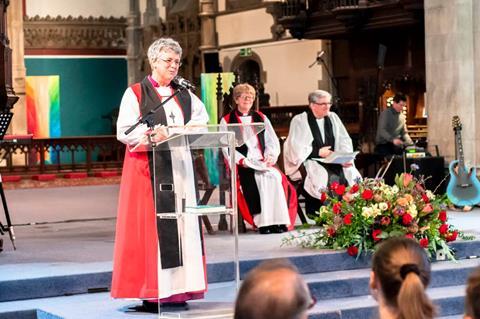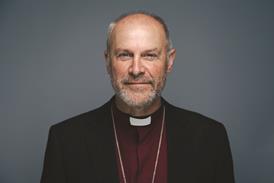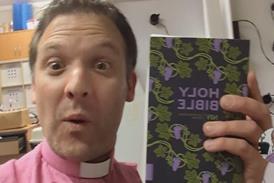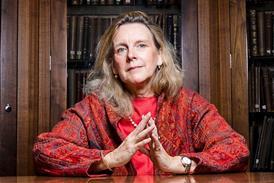Revival is not about experience or emotion and it cannot be strategised or planned for, says Rt Rev Dr Emma Ineson. It is the faithful seeking of God’s heart for the transformation of our nation, and the drawing near to God of those who are far away. Let’s pray faithfully for it to begin with us

When I was a student, a revival took root in our hall of residence.
It began with one student, who came back after the summer holidays with a conviction from God to pray daily for change with one other person. Unbeknown to him, another student had the same thought. Two pairs began meeting at 6am - a small miracle in itself for students - and soon, more and more joined them. By the end of the year, a quarter of the students in our halls had become Christians. The culture shifted so dramatically that it left a legacy still bearing fruit decades later.
This is revival: God’s Holy Spirit moving powerfully, transforming hearts and creating ripples of change that extend beyond the Church and out into society. Revival may look different in various contexts: an outpouring of the Holy Spirit, supernatural events, fervent prayer or widespread conversions. But at its core, it’s about God’s people being renewed and communities being transformed.
At the heart of Psalm 85 is a cry: “Will you not revive us again, so that your people may rejoice in you?” (v6). This verse gives us a roadmap, inviting us to explore the who, what, when and why of revival.
Who: Revival is God’s work
Revival is not something we manufacture ourselves through programmes, strategies or sheer willpower. It is entirely God’s work, and something we humbly ask God to bring. Our role is to ask, seek and wait in faith.
This truth was a hard lesson for me, growing up in a church in the 1980s where praying for revival was a really big thing. Every week there would be worship and fervent prayer and intercession. Every week we would hear prophecies about how the next revival would be the Really Big One and what the signs of it were (mostly stuff from the book of Revelation).
Revival does not take place in a church, tent or meeting hall. It takes place in the heart
But the church was more obsessed with revival than with the God who would bring it. We were more focused on emotional experiences and signs than on God himself. Revival begins with humble, patient prayer and a posture of surrender: “Dear God, please bring revival, and start with me.”
When: Revival has roots in God’s faithfulness
Psalm 85 begins by recounting God’s restoration, forgiveness and blessings in previous generations. This memory fuels hope: the same God who worked wonders before can do so again.
History is full of revivals that can inspire our prayers today. From the Wesleyan revival in the 18th century to more recent movements like the Toronto Blessing in the 1990s, and Asbury in 2023, these moments of renewal show us that God’s Spirit moves in unique and transformative ways. While no revival is a blueprint for another, they remind us that God has done it before and can do it again.
What: Revival starts in the heart
Psalm 85:5 declares: “Let me hear what God the Lord will speak, for he will speak peace to his people, to his faithful, to those who turn to him in their hearts.”
One hallmark of revival is a deep hunger for God’s ways. It is said that the Welsh revival began when a young woman named Florrie Evans stood up in church and proclaimed: “I love the Lord Jesus Christ with all my heart!” Her boldness ignited a movement of repentance and prayer. Revival begins when we open our hearts and cry out: “I love you, Jesus. Have your way in me.”
Another mark of revival seems to be a spirit of prayer - and especially prayer for repentance. Psalm 85:2 says: “You forgave the iniquity of your people; you pardoned all their sin.” This is about acknowledging the ways that we have got it wrong and asking for God’s mercy and forgiveness.
There is a deep need for repentance in our churches. My own part of that church, the Church of England, is undergoing profound soul searching in light of some high-profile safeguarding failures. We have shown very clearly that we can’t get it right in our own strength. The proper posture, when praying for revival, is on our knees.
Revival is not primarily for the Church; it’s for the world
When Notre Dame Cathedral in Paris, was reopened in December, the Pope sent a message: “May the rebirth of this admirable church therefore constitute a prophetic sign of the renewal of the Church in France”. Perhaps, as a Church, we might humbly pray that we would rise out of the ashes as God brings renewal to us, and through us.
Why: Revival brings joyful change
Sometimes, when we think of revival it can all get incredibly serious, but joy is one of the fruits of such outpourings! At the time of the Toronto blessing in the 1990s, outbursts of laughter were commonplace. As CS Lewis put it: “Joy is the serious business of heaven”. Where God’s Holy Spirit moves, we can expect a generous outpouring of joy.
The great preacher Charles Spurgeon said: “Joy in the Lord is the ripest fruit of grace, all revivals and renewals lead up to it…A genuine revival without joy in the Lord is as impossible as spring without flowers, or day dawn without light.”
But is that all that revival is? Is it just to make us feel happy or better about ourselves?
Revival is not primarily for the Church; it’s for the world. Revival transforms not only individuals but entire communities and societies. Psalm 85 imagines a world where “steadfast love and faithfulness will meet; righteousness and peace will kiss each other. Faithfulness will spring up from the ground, and righteousness will look down from the sky. The Lord will give what is good, and our land will yield its increase’ (v:9-11). It’s a picture of flourishing relationships, justice and restoration.
During the Welsh revival, crime rates dropped so significantly that courts were empty. Police officers had little to do but guide people to revival meetings. Even the pit ponies benefited, as miners treated them more kindly.
What might it look like in our time when God’s reviving Spirit flows out into everything? Could it mean healing for broken relationships, justice for the oppressed, care for creation?
Praying for revival
When we pray for revival, we pray for nothing less than God’s kingdom coming on earth as it is in heaven. It requires humility, persistence and imagination. We ask God to renew our own hearts first. We repent of our own failings and acknowledge our dependence on him. And we dare to dream of what God’s transformation might look like in our communities and beyond.
As we pray, we should be open to the unexpected. Revival rarely happens as we plan or expect. It often comes in surprising ways, through unexpected people, and in moments we least anticipate. But as long as our focus remains on God, we can trust him to do his work in his time and his way.
Two men travelled to Wales during the 1904 revival, eager to witness it first hand. Arriving at the local railway station, they asked the stationmaster: “Can you tell us where the revival is?” The man smiled, patted his chest, and said: “Gentlemen, the revival is here, underneath the buttons.”
Revival does not take place in a church, tent or meeting hall. It takes place in the hearts of women, men and children transformed by God’s Spirit. If we long for revival, we must first invite God to work under our own buttons - to change our hearts, renew our love for him, and ignite a passion for his kingdom.
Join me in praying: “Will you not revive us again, so that your people may rejoice in you?” Let’s dare to believe and wait expectantly for what God will do.





































1 Reader's comment